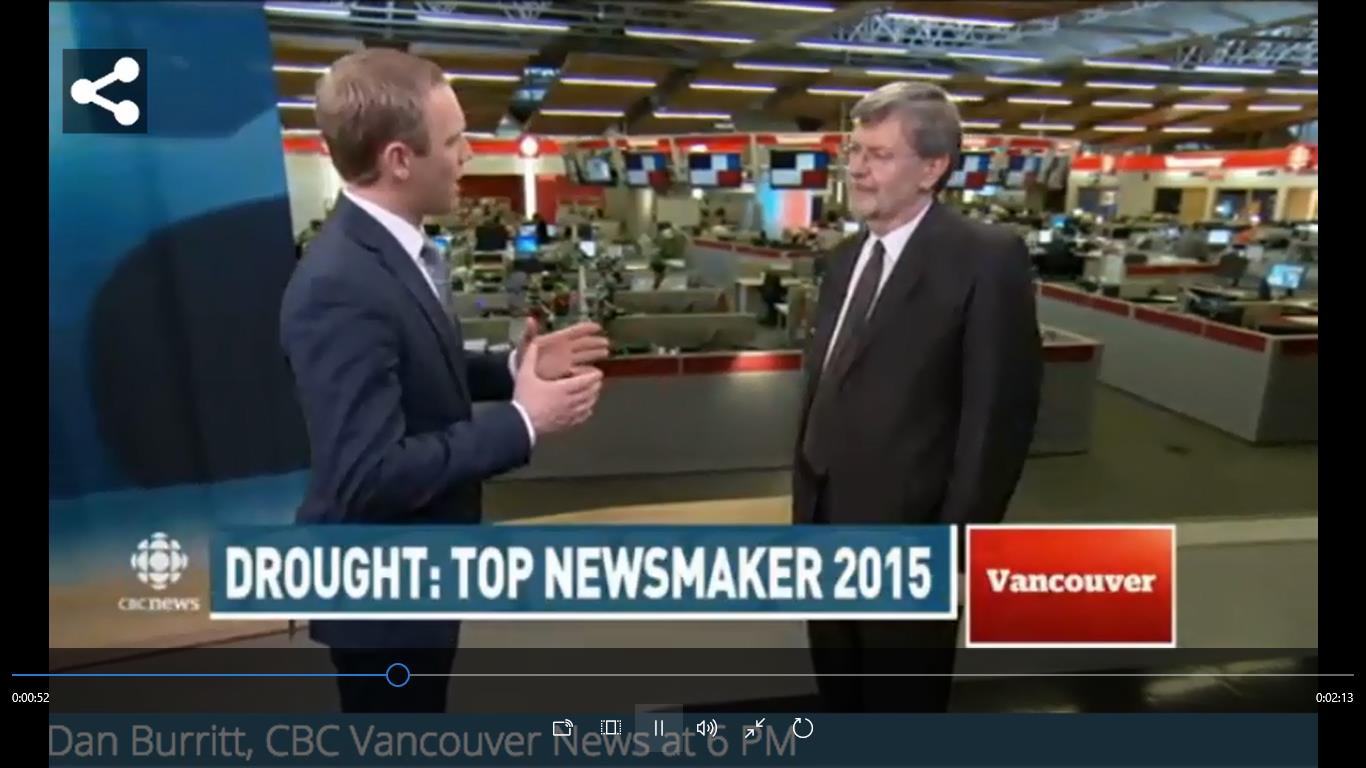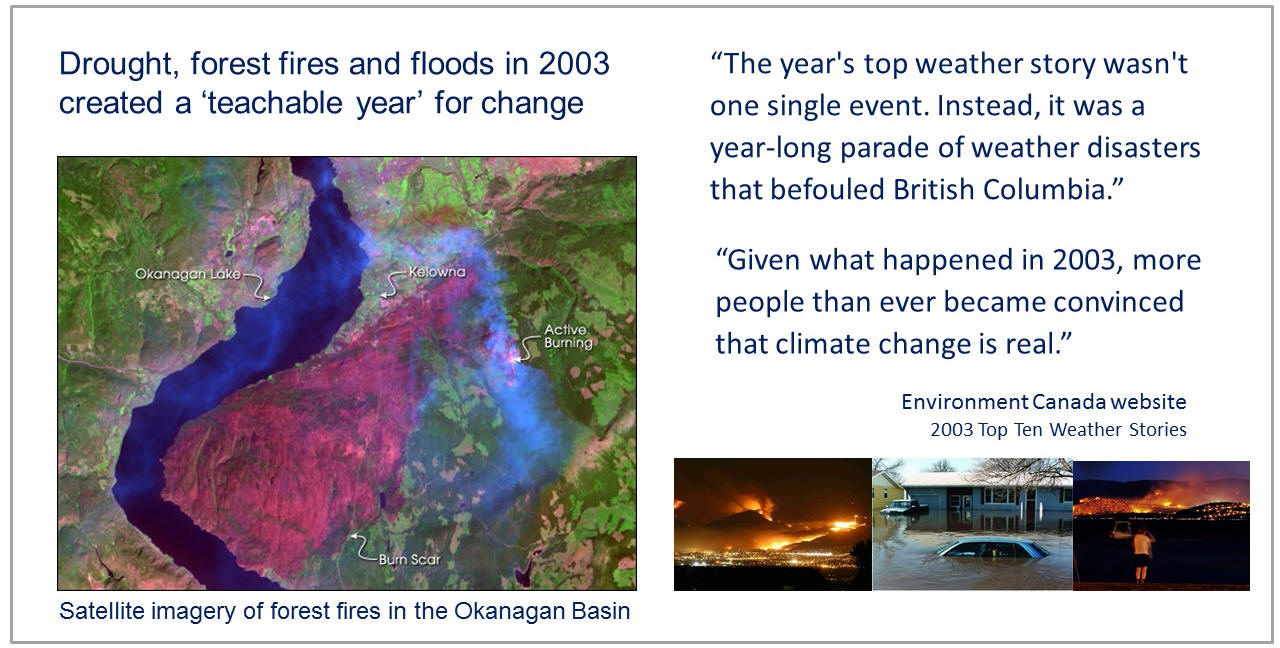"The Drought" was British Columbia's Top News Story of 2015
Note to Reader:
For British Columbians, 2015 was the year of the great drought, dwindling snow packs, melting glaciers, beleaguered salmon runs and a costly forest fire season, followed by windstorms and heavy rains. Launched from a powerful El Nino, storms caused the single largest electrical outage in the province’s history.
The 2015 Drought was selected as the Top Story of 2015 in a poll conducted by the CBC. Year-end newspaper, radio and television interviews about BC’s changing climate featured the perspective provided by the Partnership for Water Sustainability in British Columbia.

Dan Burritt, host of CBC “News at 6”, interviews Kim Stephens, Partnership for Water Sustainability in BC (Click on image or follow this link: https://waterbucket.ca/wp-content/uploads/2015/12/2015-12-23-KimStephensCBCnosubtitles.mp4)
2015 ranks with 2003 as a defining ‘teachable year’ for a paradigm-shift
The drought that extended this past winter, spring and summer from Vancouver Island to Manitoba and from Mexico to the Yukon suggests that Western North America may be crossing an invisible threshold into a different hydro-meteorological regime.
A Changing Climate
 The climate is changing. Winters are warmer and wetter. Summers are longer and drier. This is the New Normal. This pattern has been taking shape for more than a decade. Looking back, the 1987 drought ended a comparatively benign period of about 50 years in southwestern British Columbia. While 1987 was the first of three extreme droughts within a 5-year period, 2003 was “THE teachable year”.
The climate is changing. Winters are warmer and wetter. Summers are longer and drier. This is the New Normal. This pattern has been taking shape for more than a decade. Looking back, the 1987 drought ended a comparatively benign period of about 50 years in southwestern British Columbia. While 1987 was the first of three extreme droughts within a 5-year period, 2003 was “THE teachable year”.
When British Columbia experienced drought, forest fires, flood, wind and pine beetle in rapid succession, this created a window of opportunity for a paradigm-shift. The 2003 teachable year set in motion a Living Water Smart process that culminated with passage of the Water Sustainability Act in 2014.
Paradigm-Shift
Now supporting regulations are being developed. But change goes beyond mere regulations. The paradigm-shift starts with truly understanding the relationship between what we do on the land and the seasonal consequences for water, and then applying that understanding to achieve desired “design with nature” outcomes. If communities can “get it right”, they can reduce risk under both dry and wet weather extreme conditions.In terms of the impact on public awareness.
2015 ranks with 2003 as a defining teachable year. Lessons learned will inform how local governments move forward with a “water balance” approach to rainwater management, protection of watershed function and land servicing.
Look at a Watershed as a Whole System
The need to protect headwater streams and groundwater resources in BC means communities must expand their view from one that looks at the site by itself, to one that considers the site, watershed, stream and aquifer as an integrated system. Looking at a watershed as a whole system also means looking beyond man-made boundaries to work with neighbouring communities on shared solutions.
Apply the Water Balance Methodology, adopted by the Province in 2002, to mimic the hydrologic performance of a watershed. Establish targets that maintain the Water Balance distribution, both by season and pathway. Urban hydrology is a compromise between accuracy and data availability. Avoid the pitfalls of Voodoo Hydrology. Include streams as infrastructure assets that need protection from land servicing consequences.


